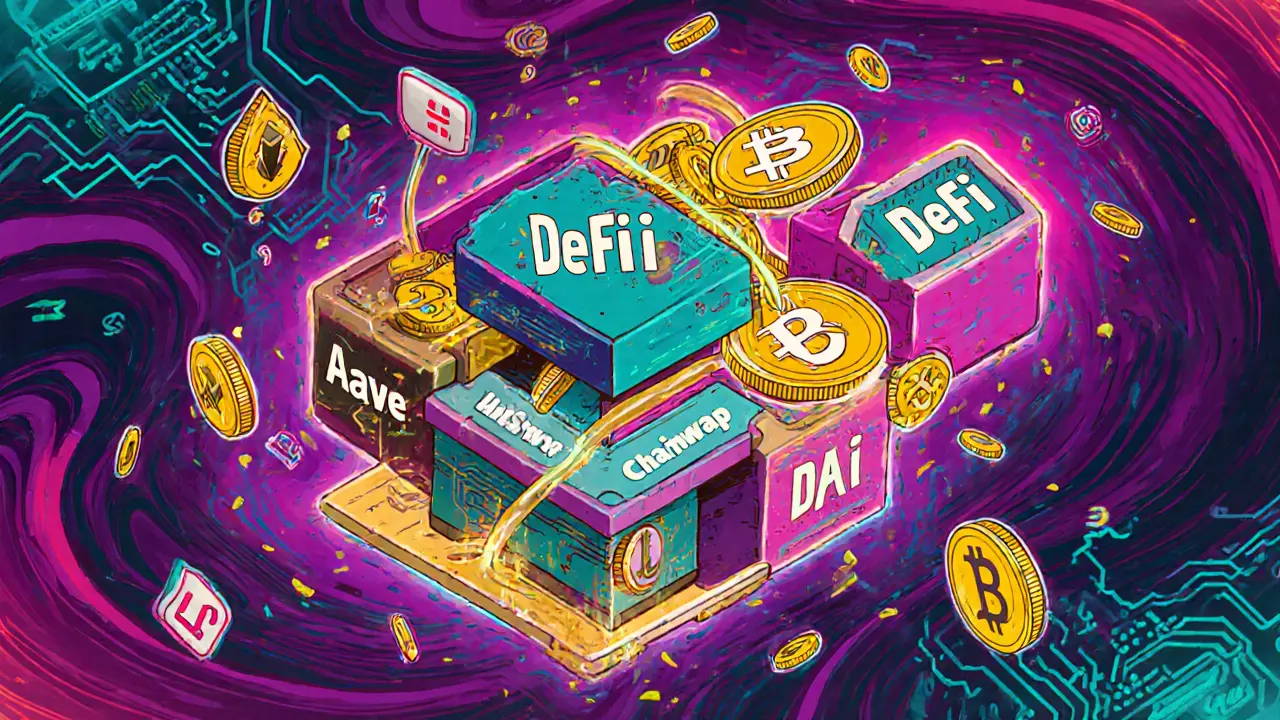Composability in DeFi: How Blockchain Building Blocks Create Financial Power
When we talk about composability in DeFi, the ability for decentralized finance protocols to connect and interact like software modules. Also known as financial Lego, it means one DeFi app can plug directly into another—no middlemen, no paperwork, just code talking to code. This isn’t science fiction. It’s what lets you borrow ETH on Aave, use it as collateral on Compound, and swap it for stablecoins on Uniswap—all in one transaction, without leaving your wallet.
That’s the power of smart contracts, self-executing programs on blockchains that run exactly as written. These contracts are the building blocks. When they’re open and well-documented, anyone can reuse them. That’s why you see DeFi apps popping up so fast: developers don’t rebuild lending or swapping from scratch. They just connect existing pieces. And that’s why interoperability, how well different blockchain networks can talk to each other matters just as much. If a protocol only works on Ethereum, it’s limited. But if it works across Avalanche, Polygon, or Arbitrum, its reach explodes. That’s what makes projects like Elk Finance or JulSwap even worth looking at—they try to bridge these chains, even if they struggle with liquidity.
Composability isn’t just about convenience. It’s about creating systems that are more powerful together than they are alone. A simple lending protocol becomes a foundation for insurance, derivatives, and automated investment strategies. That’s why you’ll find composability woven into posts about tokenomics, exchange reviews, and even airdrops. If a project relies on other DeFi tools to function, it’s playing the composability game. And if it doesn’t? It’s probably just another isolated token with no real use case—like Vatan or Electric Cash, which exist in a vacuum.
What you’ll find in these posts isn’t theory. It’s real-world examples: how DeFi is disrupting traditional finance by letting anyone build financial tools on top of each other. You’ll see how failed exchanges like BitWell or SIGEN.PRO collapsed because they ignored this principle—trying to be everything alone instead of leveraging what’s already out there. You’ll also find cases where composability worked brilliantly, like RWA tokenization, where real-world assets like gold or bonds are turned into digital tokens that can be traded across DeFi protocols. That’s the future: not isolated apps, but interconnected systems that grow stronger as more pieces get added.
What Is Composability in DeFi? The Money Legos Revolution
Composability in DeFi lets financial protocols work together like LEGO blocks, enabling users to build custom financial products without intermediaries. It's the core innovation behind yield farming, flash loans, and automated investing.
